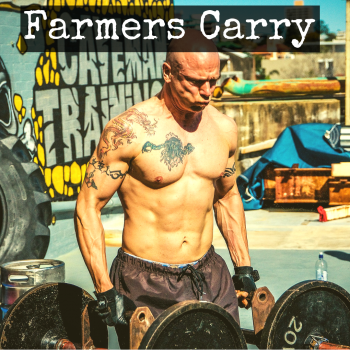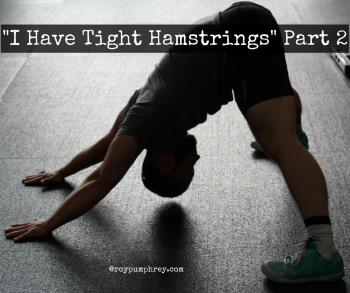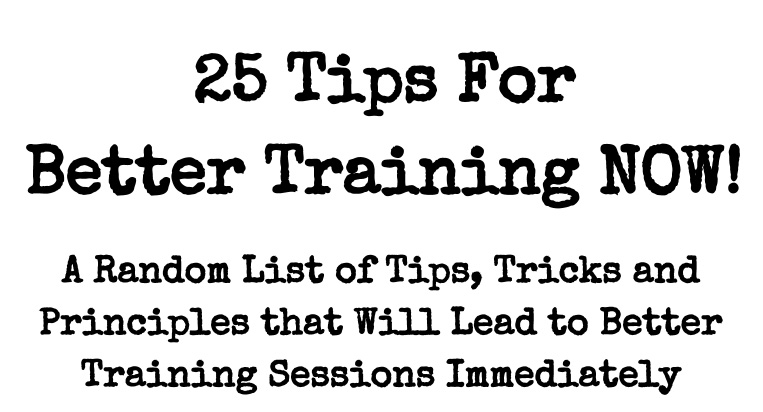Why do we swing our arms when we walk? This used to be one of the big questions in exercise physiology. The other was what's the limiting factor in oxygen utilization? O2 uptake at the muscles or O2 uptake at the lungs (the pressure across the alveolar membrane and red blood cell affinity for 02, etc) <----its this one, google anatomical dead space Circa 2009 we figured out why we swing our arms.... Swinging your arms while you walk: Makes walking more "economical" Keeps us walking straight "The results showed that arm swinging, either normally or in the opposite direction, required little effort from the muscles. “Instead of being … [Read more...]
You Should Do This: Marching Suitcase Carries
Truth is, I Only Know 6 Exercises. If you think about it all exercises come back to: From John Rusins instagram Every exercise falls into one or more of those categories. With loaded carries maybe being the most "functional" of all of those categories. Carries train: Grip Shoulder Stability Core Hips Legs Too often clients with poor core or hip strength or adequate strength but a lack of motor control will compensate by overarching the low back, leaning the trunk to one side or shifting the hips. How do we fix/ counteract these compensations? Marching What are the components of marching? Neutral Pelvis Knee at or … [Read more...]
You Should Do This: Tall Kneeling Pallof Iso Holds
Glutes Are Core Lets face it, we could all use a little bit more of both. And the truth is, glutes ARE core. But Roy, "I thought only abs are core." Abzzz are core, but so are glutes. How Are Glutes Core? Abs are primarily meant to STOP motion through the lumbar spine/ "core". The problem with this is that the abs work best when the spine is in neutral. We also call this the Cylinder or Neutral Scissor Position Neutral spine is RELIANT on a neutral pelvis... Wait But What? Yeah, the sacrum, the last segment OF YOUR SPINE is integrated with your pelvis. INTEGRATED, as in, it's the middle segment. You literally can't build a pelvis … [Read more...]
You Should Do This: Farmers Carry
What's the Most Functional Exercise You Can Do? Probably picking sh@t up and carrying it. https://www.youtube.com/watch?v=Bzu5JraS9kM really great tutorial and variations, def worth the watch We just went over this a few weeks ago...You Should Do This: Chaos Carries But, I've kinda, sorta noticed that not only have Farmers Carries become more popular but they're often absolutely brutalized. Most People do Farmers Carry's Like a Wet Noodle. I don't know how this became a thing but more and more the bells or worse the PERSON is waving in the wind while "performing" the exercise. Maybe it comes from seeing things like the Worlds Strongest Man on TV. Or … [Read more...]
You Should Do This: Plate Raise
"Tight is Right, Right is Tight" - I say that Often. What does it mean? Get tight, create tension, don't allow the body to rock, move, lean, bend etc with each rep. Motion should only occur at the joints where we INTEND for motion to take place. The Cylinder Position The "cylinder" position and neutral spine are one and the same. The Ribs and Hips should be in a neutral, stacked, position. This creates a "cylinder", stacking the spine in proper alignment and helping the core to activate properly and lock not only the spine but with correct foot pressure, the whole body. The cylinder position allows the: Core to activate and stiffen … [Read more...]
“I Have TIght Hamstrings” Part 2: Anterior Pelvic Tilt
Last time we dealt with the dreaded No Ass Syndrome and how that can give you some tight hamstrings. This week we'll take on the most common culprit. No Core.... And the overactive, super tight quads that follow. I affectionally call this the Duck Butt, but the technical term is Anterior Pelvic Tilt from Cathedral Chiropractic Basically, the pelvis, the bowl of water is tipped forward. Before we get any farther, some degree of Anterior Pelvic Tilt is pretty common and can be considered "normal" posture. In fact anterior pelvic tilt is the most common postural adaptation in athletes: "The most commonly reported sport-specific postural adaptations of the … [Read more...]










